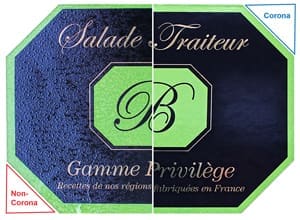While digital printing was a long way into the future when corona treatment was first invented and developed to help printers cope with the booming demand for printed plastics in the 1950s, the principle of combating surface tension to allow inks and lacquers to adhere to a range of uncooperative substrates, is just as relevant in today’s digital age.
It is a well-known phenomenon that digital presses, whether toner or inkjet require a pre-conditioning of the substrate that is to be printed – and this can be an expensive process, especially as the quality of this pre-treatment can vary. “We are currently involved in a series of extensive lab tests to evaluate how we can overcome the need for printers to buy pre-treated stock and provide a more cost-effective and reliable solution,” explained Nielsen, from Vetaphone’s headquarters in Denmark.
The problem arises largely because the digital inks contain plastic polymers and oil, which naturally have a very low surface tension, and therefore poor adhesion to any post converting process. And, the higher the ink coverage, the worse the situation becomes. To combat this, the substrate requires additional treatment, in this case corona, to secure the bonding on top of the ink with any type of varnish or lamination.
“If you look at any number of HP installations where there is an ILP unit, you will find that the user applies corona before priming, and again after printing, and in some cases, once again to seal the UV coat before other decorative processes are added, like those from Scodix,” he said, adding, “it builds in a degree of security as far as quality and performance are concerned.”
To appreciate his comments, one needs to understand the underlying science behind corona treatment. Corona treatment is a high frequency discharge that increases the adhesion of the surface to be printed. Whether a liquid ‘wets’ a material well or poorly primarily depends on the chemical nature of both the liquid and the substrate. Wetting is defined as the ratio between the surface energies of the liquid and substrate. “In general, a material will be wetted if its surface energy, expressed in dyne/cm, is greater than the surface energy of the liquid. If it is not, there will be an adhesion problem” explained Nielsen.
The pre-treatment offered by the Corona process creates sufficient wetting and adhesion before printing, laminating or coating takes place, and the technique has proved to be both highly efficient and cost-effective, especially as it can take place inline.
Corona treatment works on the molecular chains in the substrate that are normally joined end-to-end forming even longer chains. This leaves only a few open chain ends, and therefore only a small number of surface bonding points. “It is these few bonding points that cause the low adhesion and wettability, which becomes a problem in the converting process. During corona discharge treatment, electrons are accelerated into the surface causing the long chains to rupture, and this creates a multiplicity of open ends and free valences” he explained.
The ozone in the electrical discharge is accelerated onto the surface, which in turn forms new carbonyl groups with a higher surface energy. The result is an improvement of the chemical connection (dyne/cm) between the molecules in the substrate and the applied media/liquid. “This surface treatment does not reduce or change the strength of the substrate, nor does it change the appearance of the material.” Corona treatment changes only the top molecule chains.
Over time, dyne levels can decrease and it may be necessary to Corona treat the material again just before use, if it has been stored for any length of time. “Storage conditions and temperature can affect dyne levels. Generally speaking, the higher the amount of slip in the substrate, the quicker it is likely to decay” he commented. On the subject of filmic materials, Nielsen said that Vetaphone recommends corona treatment just after extrusion, and then again just before the liquid or media is supplied to the surface in the converting process.
As with so many processes, the difference between success and failure can be extremely small, as is the case here. Even today’s sophisticated presses, whether digital or otherwise, will not reach their full potential without good preparation – and this includes surface treatment of the substrate to be used. Most recognise the need for corona without fully appreciating why. “Even in today’s digital world, it’s still the small details that determine success or failure – and essential that printers understand the importance of a small investment if they want to reap the rewards of a big one” he concluded.

